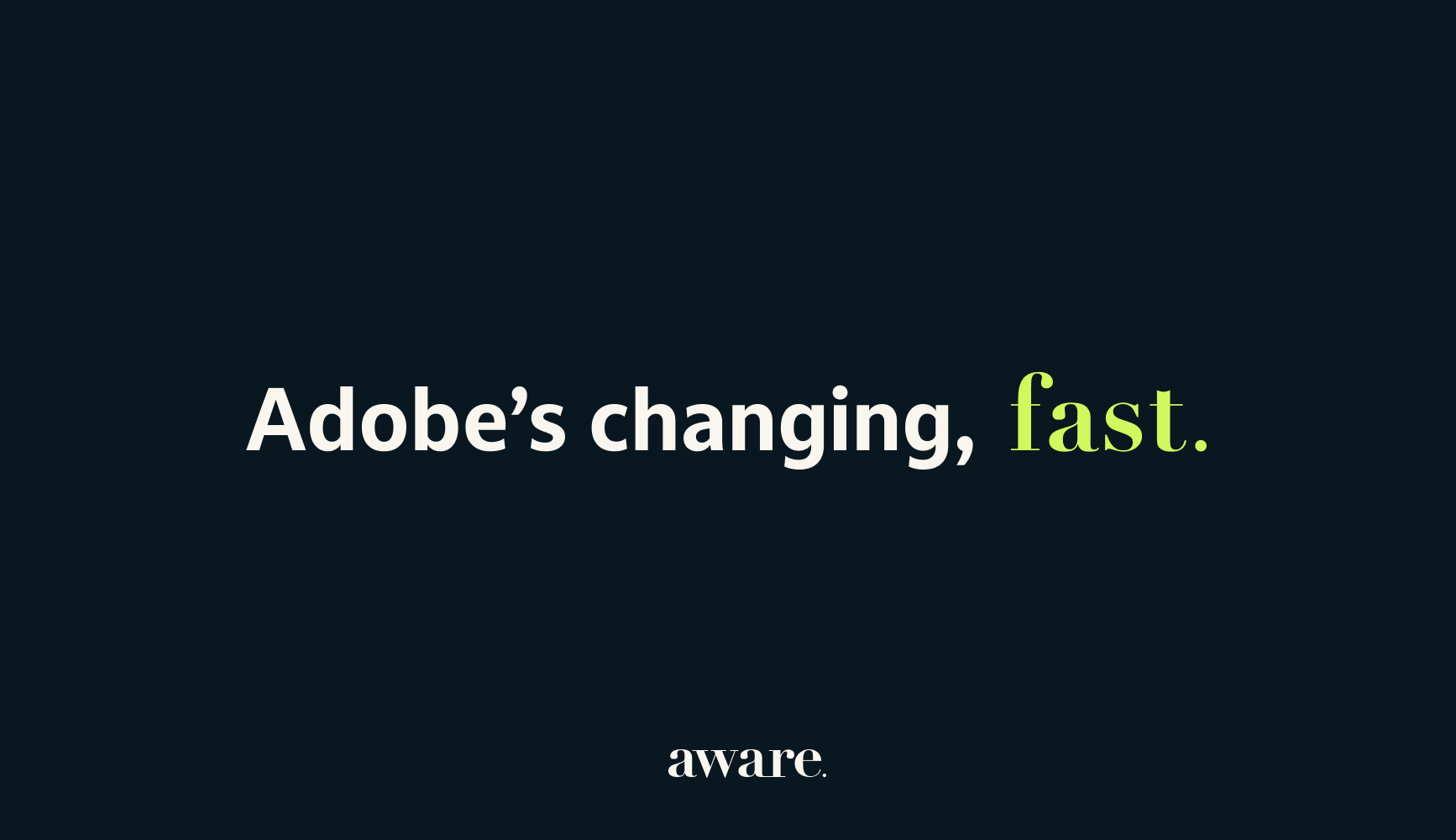
We’ve just got back from Adobe’s Partner Day in Barcelona, where their product team walked us through what’s next for Adobe Commerce. And trust us. It’s not just a version bump. Adobe is rebuilding how Commerce works. The platform is being redesigned around speed, scalability and composability. We sat down with our Head of Technical, Stuart Otter to discuss all things Adobe and how their changes impact our devs & clients.
Composable commerce
At the forefront of Adobe Commerce’s evolution is its shift towards a composable architecture. But what exactly does that mean?
At its core, composable means building your store from modular parts that work together to form a complete system. Think of it like Lego for eCommerce, you choose the bricks you need, plug in best-in-class services where they make the most sense, and swap out parts without having to knock the whole thing down.
Stu our Head of Technical, said:
“This approach gives you far more flexibility. You’re not locked into a setup or forced to use tools that don’t suit your business. Instead, you can create a tailored stack that meets your exact needs, now and as you grow.”
Adobe Commerce as a cloud service
The Magento admin is still there. But the core is locked down. That means more stability, no more patches, meaning fewer surprises and headaches when keeping your store up to date and secure. Instead of developers managing infrastructure, Adobe takes care of the backend, platform updates & performance tuning, reducing technical debt and risk, freeing up teams to focus on features to add value, not firefighting.
“It’s the biggest architectural shift since Magento 2 launched. For agencies like us, it means we can spend less time debugging obscure platform issues and more time delivering features that actually drive revenue.” - Stu
Adobe Commerce Optimizer
Stuck with a store that’s slowing you down, but not ready to take on the cost and chaos of a full rebuild?
That’s where Adobe Commerce Optimizer comes in.
“It essentially gives you a fresh new storefront, built for performance and flexibility. You’ll get a modern frontend that makes managing your catalogue quicker and easier, all while plugging straight into your existing backend or ERP. It’s a headless setup that works with what you’ve already got, so you can level up your store without starting from scratch.” - Stu
Other changes to take note of
These two tools have been flying under the radar for a while, but they’re now opening up even more ways to extend your Adobe Commerce setup.
Storefront
Adobe’s new frontend, built on Edge Delivery Services. This means lightning-fast load times thanks to content being served closer to your customers, wherever they are in the world. It’s designed for speed, flexibility, and a better shopping experience from the ground up.
App Builder
Forget the tangled mess of clashing modules. App Builder lets you create standalone apps that run outside your core system, so you can add functionality without breaking everything else. It also supports single-page applications right inside the admin, making it easier to customise and extend how you work behind the scenes.
What this means for Magento merchants
If you’re on Adobe Commerce or thinking about making the move, this is a moment to pay attention. The platform is evolving quickly, and the focus is shifting to composability, performance, and reduced overhead.
Magento’s always been powerful, but it’s had a reputation for being heavy to maintain. With these changes, Adobe is giving us the power without the weight. That’s a win for devs, merchants, and customers.
And if you’re on Open Source? There’s a clearer path than ever to tap into Adobe Commerce services without a full replatform. It means you can get more value from the features you build and a better return on the time and budget you put into your store.
Want to know more or get support with your online store? Get in touch with our team at Aware Digital.








